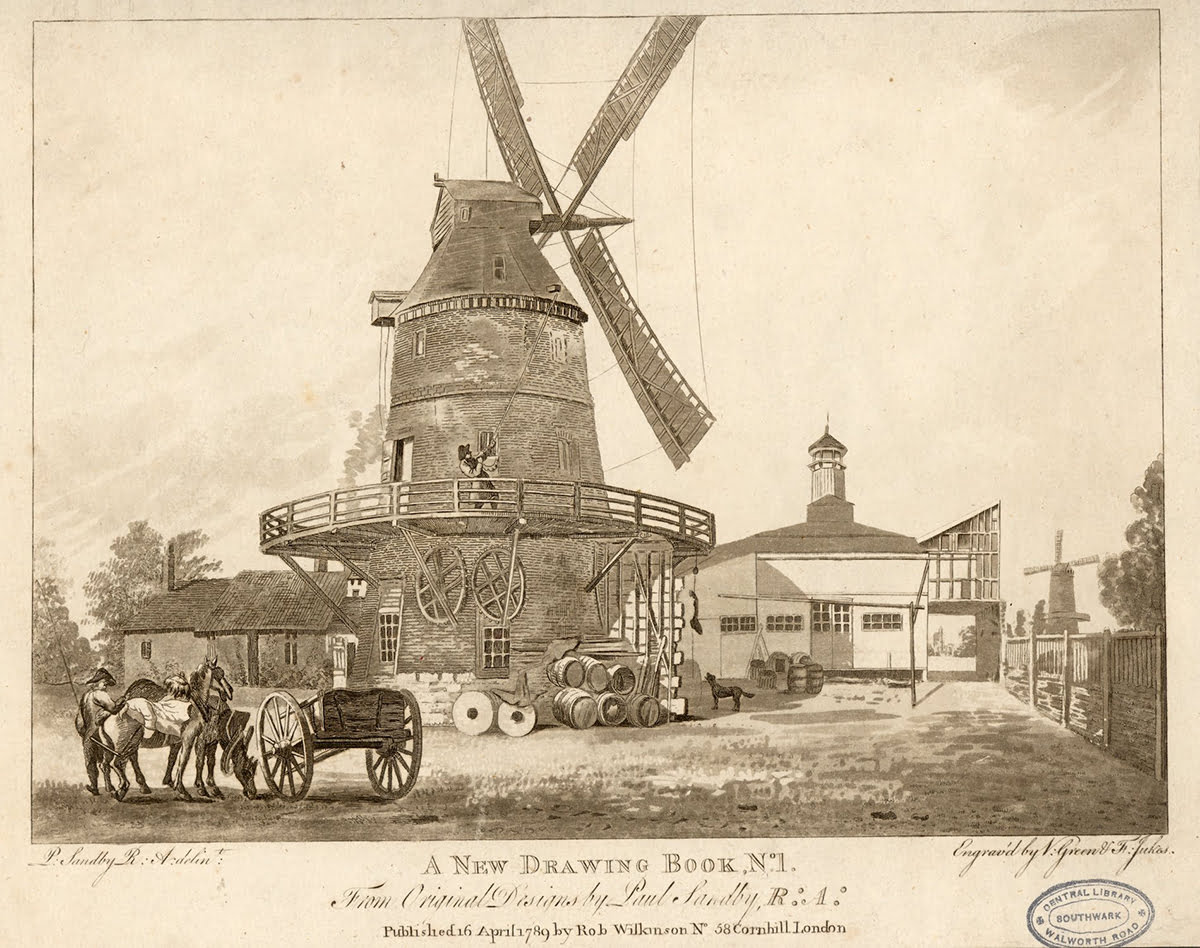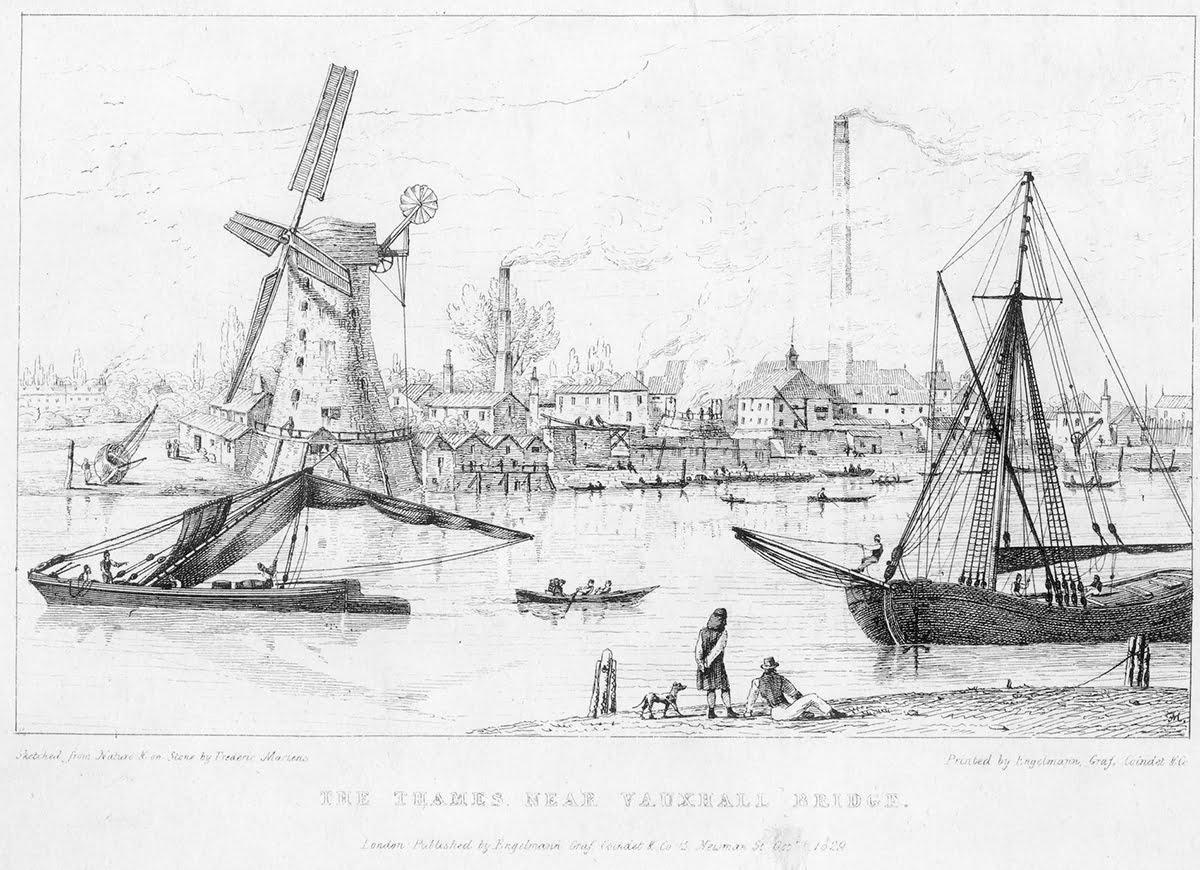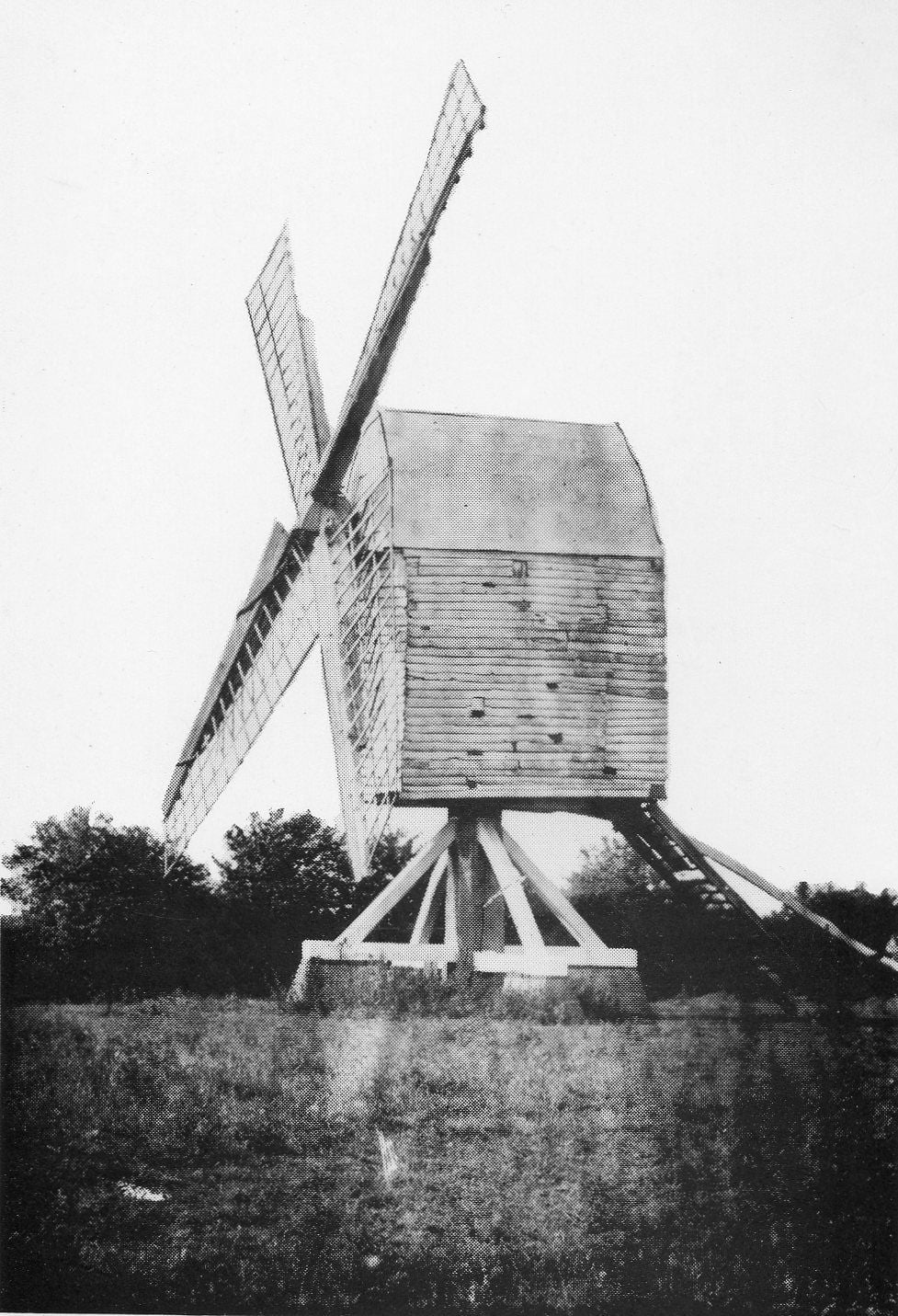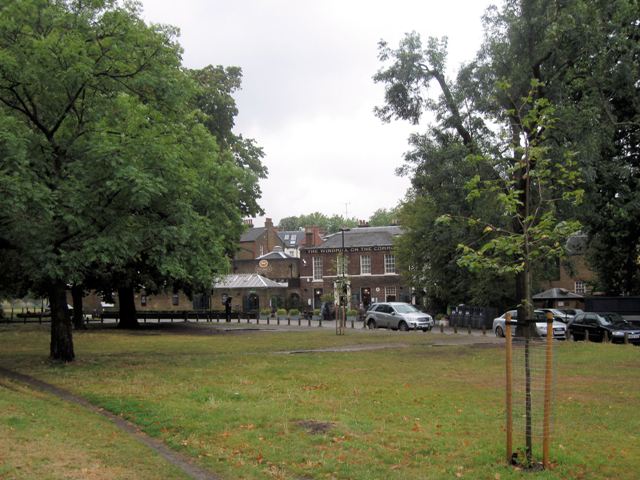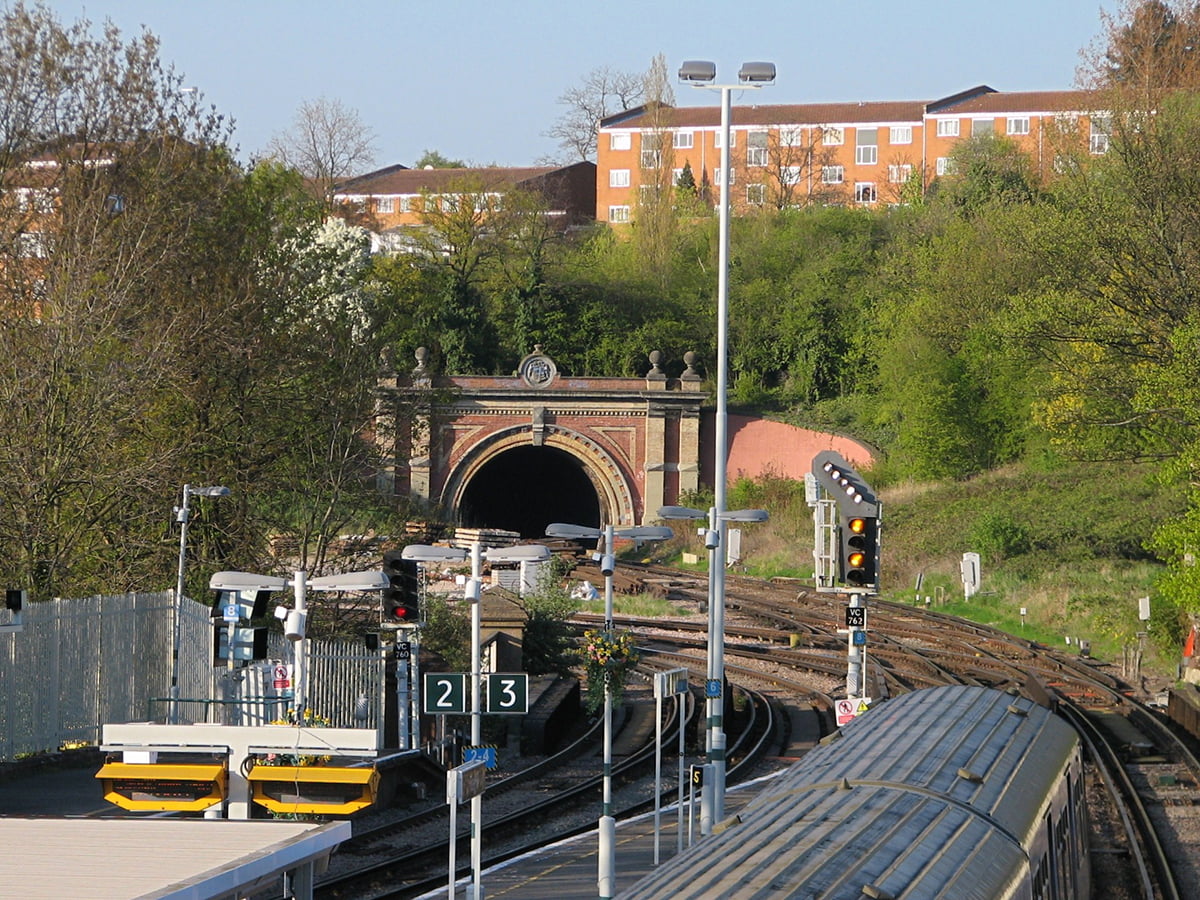Today Brixton has London’s last working windmill, but go back in time and you would have seen lots more locally and across the city.
Many of the things we buy used to be made locally. London was surrounded by fields and farmers could bring their grain directly to windmills to be made into flour for bread. But windmills were important for other things too — grinding drugs and spices, and using their wind power to saw wood and pump water.
Then the Industrial Revolution came and London grew bigger in the middle of the 19th century. Fields and farms were replaced by houses and shops, and windmills like Brixton’s got less wind as buildings sprung up around them.
The earliest windmill in Lambeth we know of is from the 16th century, although there were probably mills before then too. There have been at least 12 windmills in Lambeth at different times — the maximum number at any one time was the beginning of the 19th century, when there were five including Brixton Windmill. Explore more of Lambeth’s windmills on a map.





